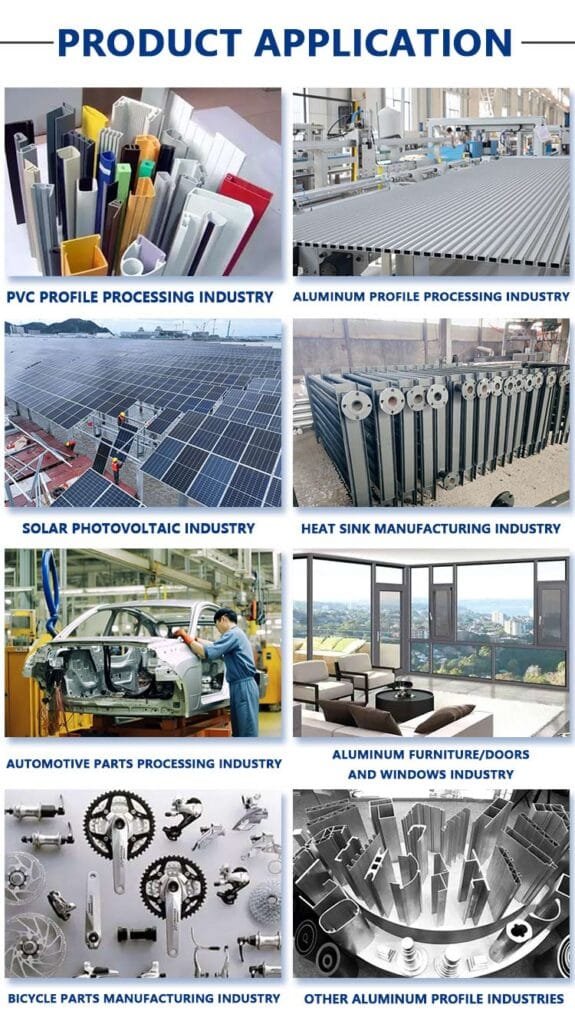The production of aluminum thermal break window profiles involves a sophisticated manufacturing process that combines advanced metallurgy and precision engineering. These specialized profiles are essential for modern energy-efficient buildings, offering superior thermal insulation while maintaining structural integrity.
1. Raw Material Preparation The process begins with aluminum ingots (typically 6063 or 6061 alloy) which are melted and cast into billets. Key characteristics:
- Aluminum purity: 99.5%-99.7%
- Alloying elements: Magnesium (0.45-0.9%) and Silicon (0.2-0.6%) for strength
- Homogenization: Heated to 450-580°C for uniform microstructure
2. Extrusion Process The core manufacturing stage uses horizontal extrusion presses:
- Press capacity: 630T to 2600T for different profile sizes
- Die temperature: 450-500°C
- Extrusion ratio: 15:1 to 80:1
- Cooling rate: 3-5°C/second after exiting the press
3. Thermal Break Technology The critical insulation feature involves:
- Polyamide barrier insertion (6mm-34mm thickness)
- Dual extrusion technique with precision groove machining
- Thermal conductivity: ≤0.3 W/(m·K) for the break material
- Structural strength: Maintains ≥150MPa yield strength
4. Surface Treatment Multiple finishing options ensure durability:
- Anodizing: 10-25μm thickness, AA-M12C22A41 standard
- Powder coating: 60-80μm thickness, QUALICOAT Class 1/2
- Electrophoresis: 12-20μm with excellent corrosion resistance
- PVDF coating: For extreme weather conditions
5. Quality Control Systems Advanced testing protocols include:
- Thermal performance testing (U-value ≤1.6 W/m²K)
- Air/water infiltration tests (ASTM E283/E331)
- Structural load testing (ASTM E330)
- Salt spray testing (3000+ hours to ASTM B117)
6. Production Line Configuration Modern facilities typically feature:
- Billet heating: Induction or gas furnaces
- Extrusion: Tandem presses with run-out tables
- Cooling: Air quench or water mist systems
- Stretching: 1-3% elongation for stress relief
- Cutting: CNC precision saws (±0.5mm accuracy)
- Aging ovens: 175-185°C for T5/T6 temper
Industry Applications These profiles are used in:
- High-rise curtain walls
- Passive house windows
- Commercial storefronts
- Residential energy retrofit projects
The complete processing line represents a fusion of materials science and mechanical engineering, delivering products that meet international standards like EN 14024, AAMA 611, and GB/T 5237. With sustainability becoming paramount in construction, aluminum thermal break windows continue gaining market share due to their recyclability (95%+ recovery rate) and lifecycle advantages over traditional materials.
This article incorporates technical specifications from aluminum extrusion processes, thermal break technology standards, and window manufacturing practices. The data reflects current industry benchmarks for quality and performance.



